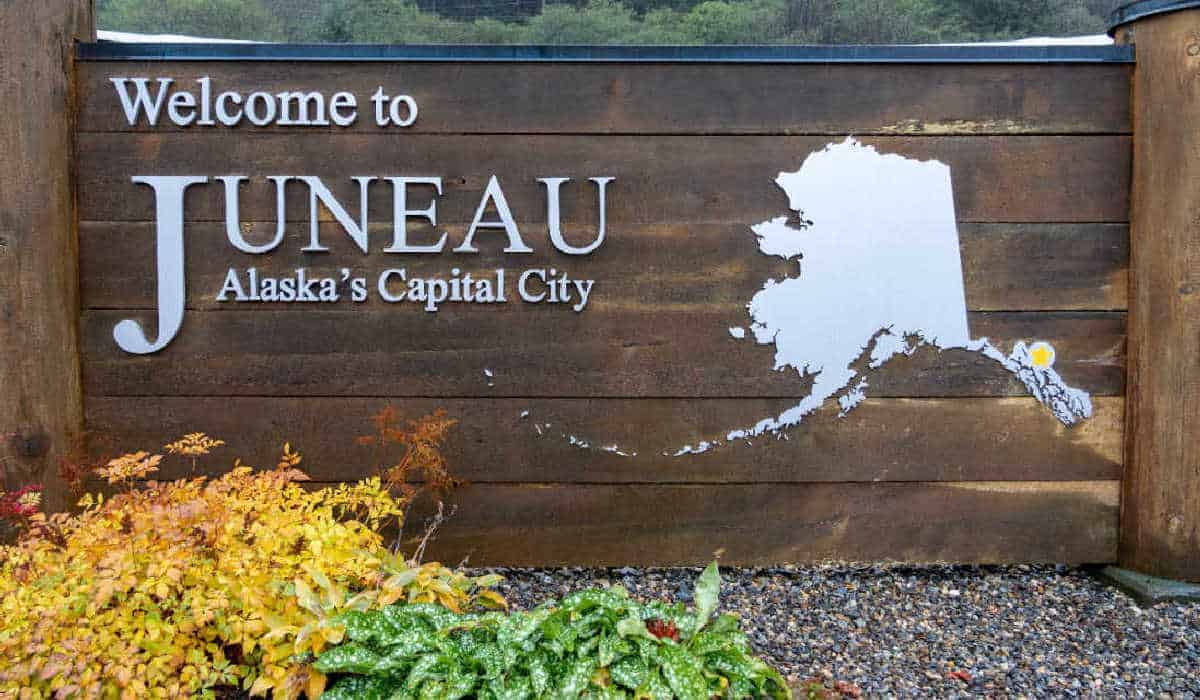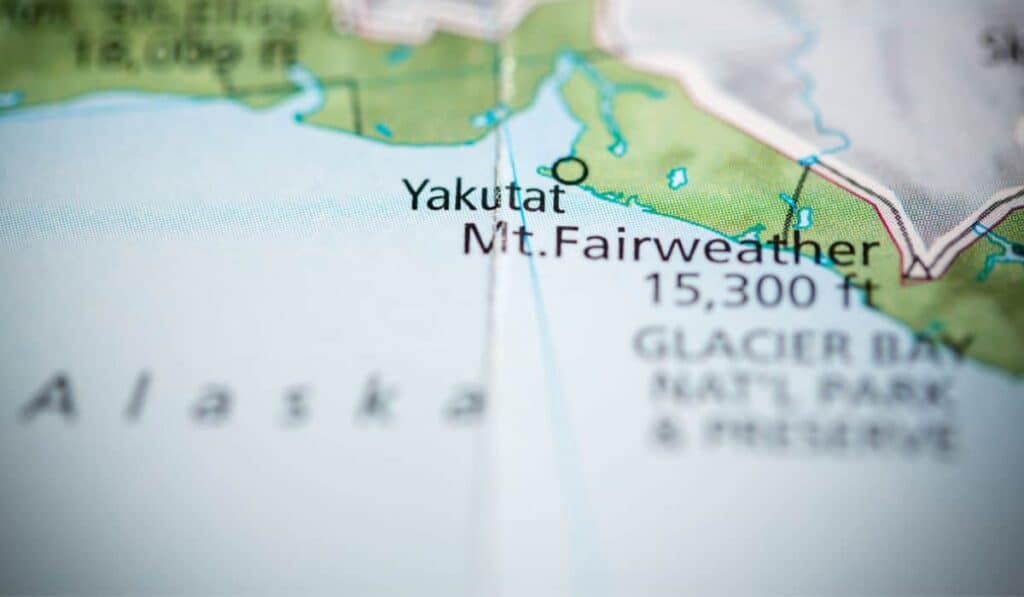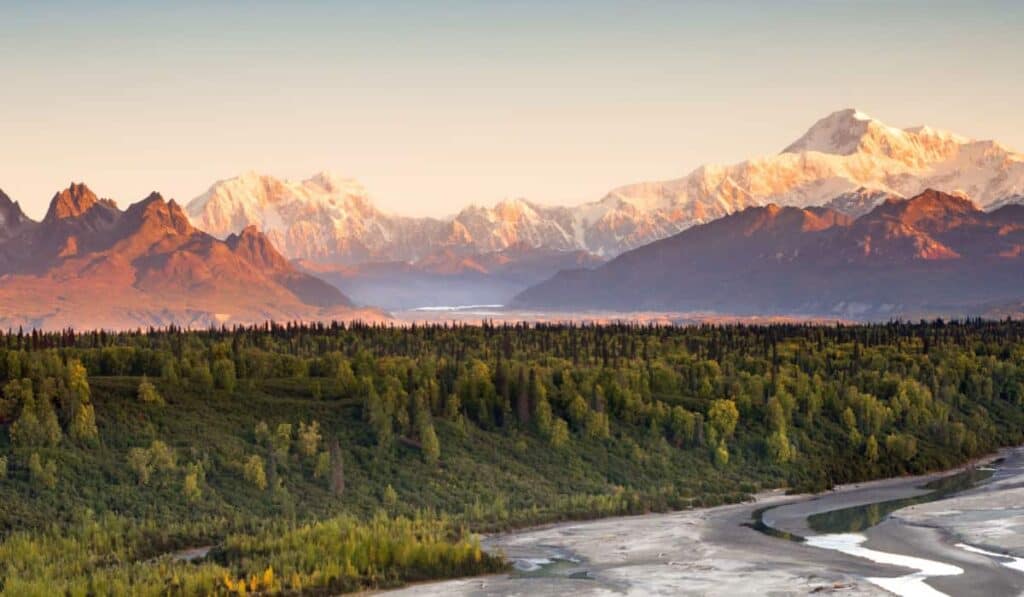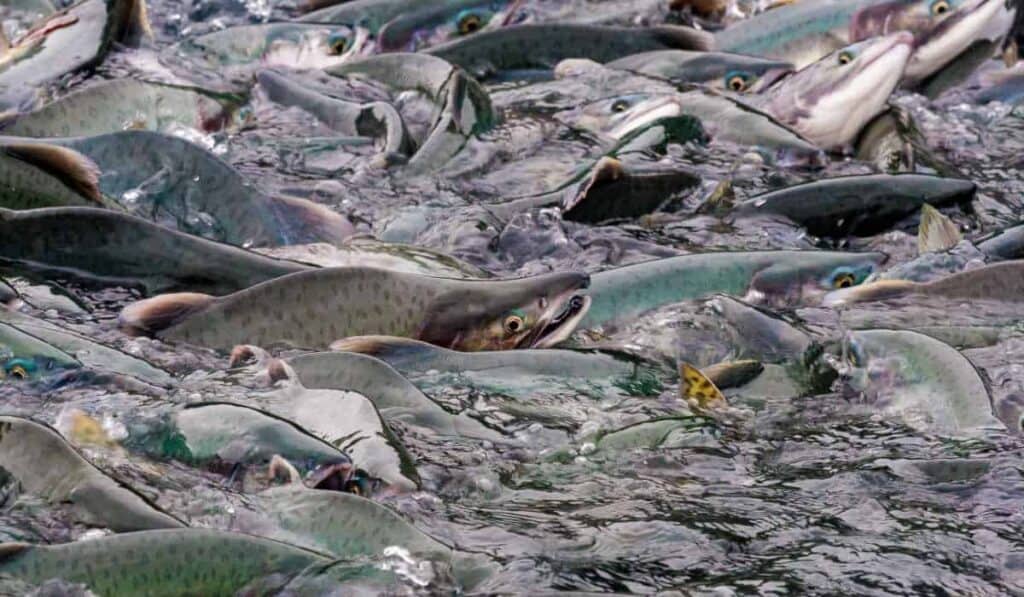What Is Juneau Known For?
Juneau, the capital of Alaska, is known for its unique blend of natural beauty, rich history, and vibrant local culture. Its notable features range from magnificent glaciers, lush rainforests, and abundant wildlife to a strong native heritage. The city’s prominence as a political hub and its gold rush past add to its distinctive character.
When most people think of Juneau they think of bears and ice.
Unless they’ve been here before, then they probably think of mosquitos.
However, Juneau is known for much more than just its wildlife and cold weather (although we have that in spades).
Having lived here for more than half my life I feel like I’ve got a pretty good handle on the city and can let people know what it’s known for.
So if you’re interested in looking a bit deeper into Juneau or possibly joining the one-million-plus people that visit every year, here are things that you’ll want to know about Juneau, Alaska.
20 Things Juneau Is Known For
1. Being The State Capital

Contrary to what most people seem to guess, the capital of Alaska is Juneau, not Anchorage. Located in the heart of Juneau, the Alaska State Capitol is the political epicenter of the state. Constructed in the late 1920s and early 1930s, the building was initially used for federal government offices before it became the territorial and state capitol.
This notable structure houses the offices of the Governor, Lieutenant Governor, and the Legislature. Its distinctive architectural style reflects the simple, utilitarian design popular at the time of its construction. Visitors can partake in guided tours that provide an in-depth look into Alaska’s political past, legislative processes, and the unique elements of the building’s structure.
2. Mendenhall Glacier

I know I said we’re more than ice…but we’re still mostly ice. Afterall, part of the Mendenhall Glacier Recreation Area, the Mendenhall Glacier, is one of Juneau’s top natural attractions.
This 13-mile-long glacier is nestled within the Tongass National Forest. The visitor center provides an excellent vantage point for viewing the glacier, Mendenhall Lake, and Nugget Falls.
There are also trails suitable for all ages and abilities that provide opportunities for exploring the nearby landscape, including the Photo Point Trail and the Nugget Falls Trail. The glacier serves as a stunning reminder of Alaska’s wild and icy core, offering visitors a chance to connect with the state’s raw beauty.
3. Tracy Arm Fjord

Tracy Arm Fjord is a deeply indented fjord located about 45 miles south of Juneau.
The fjord stretches over 30 miles and is enveloped by towering cliffs and mountains. It is one of the most breathtaking natural features in Southeast Alaska, offering views of lush rainforests, stunning waterfalls, immense glaciers, and an array of wildlife.
Visitors often have a chance to see seals, whales, and bears while exploring the fjord. For many, sailing through the Tracy Arm Fjord is a highlight of their Alaska journey, offering them an up-close encounter with the state’s raw, natural beauty.
4. Mount Roberts Tramway

Rising 1,800 feet from the cruise ship dock in downtown Juneau, the Mount Roberts Tramway offers spectacular, panoramic views of Juneau and Gastineau Channel. The tramway is one of the most vertical in the world, providing a thrilling ride to the Mountain House and the trailheads at the 1,800-foot level.
Besides the view, attractions at the top include a nature center run by the local Tlingit community, the Timberline Bar & Grill, the Raven Eagle Gifts & Gallery, and a raptor center (raptors meaning eagles…).
Numerous hiking trails of varying difficulty also originate from the tram station, making it a great starting point for further exploration.
5. Alaska State Museum
The Alaska State Museum, located in the state capital, Juneau, showcases a comprehensive collection of artifacts that narrate the rich history, culture, and art of Alaska.
The museum features indigenous art, historical artifacts, and exhibitions relating to Alaska’s Russian and American periods. Visitors can explore fascinating displays related to the state’s unique history, including its native cultures, Russian influence, the gold rush era, World War II, statehood, and the 1964 earthquake.
The Alaska State Museum offers a deep dive into the intriguing past of the 49th state and provides visitors with a better understanding of its people and their stories.
6. Juneau Rainforest Garden

The Juneau Rainforest Garden, located on a hillside overlooking Gastineau Channel, is a botanical haven that beautifully showcases the diverse flora of Southeast Alaska.
This six-acre garden features a combination of native plants, perennial gardens, and annual flower displays, providing a riot of color and life against the backdrop of the temperate rainforest. The garden also includes scenic walkways, water features, and artistic installations. It’s a serene place where visitors can relax amidst the beauty of nature while learning about local plant life.
7. Whale Watching

Juneau’s location in the Inside Passage makes it a prime spot for whale watching, particularly for humpback whales.
From April through November, the waters around Juneau teem with these magnificent creatures. Whale-watching tours in Juneau typically guarantee sightings and offer an exciting opportunity to witness humpback whales breaching, tail slapping, and bubble net feeding.
Occasionally, orcas are also sighted. In addition to whales, you might see sea lions, harbor seals, bald eagles, and a variety of seabirds.
8. Glacier Gardens Rainforest Adventure
The Glacier Gardens Rainforest Adventure is a 50-acre botanical garden located within the Tongass National Forest. The gardens are famous for their Flower Towers, which are made from reclaimed and inverted tree trunks with flowers planted on top.
A guided tour takes visitors through the lower gardens and then in covered shuttles up Thunder Mountain, where there are viewing platforms offering panoramic views of Juneau, Gastineau Channel, Douglas Island, and beyond. With its unique blend of creative landscaping and natural beauty, this garden is a delight to explore.
9. Gold Rush History

Juneau, founded during the gold rush in 1880, has a rich history that’s tied to gold mining.
The Last Chance Mining Museum and Historic Park offers an opportunity to delve into this past. The museum is housed in the old compressor building of the Alaska-Juneau Gold Mining Company, which was once the world’s largest hard-rock gold mining company.
Visitors can explore the building, view mining artifacts, and even walk along the old mining tracks. The ruins of the Treadwell Mine on Douglas Island also offer a glimpse into Juneau’s mining history.
10. The Alaska Brewing Company

Since its establishment in 1986, the Alaskan Brewing Company has been producing a wide variety of award-winning beers.
Many of these brews are made with local ingredients, including Sitka spruce tips and glacier-fed water, that are reflective of the Alaskan landscape.
The brewery offers a “Taste of Alaska” tour where visitors can learn about the company’s history, the brewing process, and, of course, sample their delicious beers. This company isn’t just a local favorite; its beers are distributed throughout the United States and have won numerous national and international awards.
11. Juneau-Douglas City Museum
Located in downtown Juneau, the Juneau-Douglas City Museum preserves and shares the rich history of Juneau. The museum provides a comprehensive overview of the city’s history and culture, from the time of the area’s original Tlingit inhabitants, through the gold rush era, to the present day. Exhibits include historic photographs, artifacts, and art pieces. Additionally, the museum hosts guest lecturers and seasonal events, enhancing the cultural landscape of Juneau.
12.Tongass National Forest

Encompassing 16.7 million acres, the Tongass National Forest is the largest national forest in the United States.
The forest spans across Southeast Alaska and is characterized by its temperate rainforests, glaciers, mountains, and fjords. It serves as a habitat for a diverse range of wildlife, including brown and black bears, wolves, Sitka black-tailed deer, bald eagles, and five species of salmon.
The Tongass also offers numerous recreational opportunities such as hiking, fishing, camping, and bird watching.
13. Downtown Juneau

Downtown Juneau, nestled at the base of Mount Juneau and Mount Roberts, offers a charming blend of old and new.
Historic buildings, contemporary shops, eateries, and art galleries line the streets. Landmarks such as the Red Dog Saloon, a genuine gold miner’s saloon, and St. Nicholas Russian Orthodox Church, the oldest original and continuously used Russian Orthodox church in Southeast Alaska, imbue the area with a rich historical ambiance.
A walking tour of downtown Juneau reveals the city’s storied past, from the time of its establishment as a gold mining camp in the 1880s to its growth into the political and cultural hub of Alaska. The vibrant street life, varied dining options, and unique local shops make downtown Juneau a must-visit location.
14. Perseverance Theatre
Founded in 1979, the Perseverance Theatre is the largest professional theatre company in Alaska.
This non-profit theatre is known for producing a variety of performances, ranging from classics to contemporary works and new plays by Alaskan playwrights.
The theatre’s mission is to create professional theatre by and for Alaskans. It offers a platform for local artists and serves as a cultural cornerstone in Juneau, providing residents and visitors with thought-provoking, high-quality performances. The theatre also runs education and training programs, nurturing the next generation of Alaskan artists.
15. Douglas Island
A short drive or a walk across the Gastineau Channel from downtown Juneau brings you to Douglas Island. The island offers stunning views of the channel and Juneau. It’s home to Sandy Beach, where you can see the remnants of the Treadwell Mine, the Eaglecrest Ski Area, and the Douglas Island Pink and Chum (DIPAC) Macaulay Salmon Hatchery. The island also has several hiking trails and picnic spots, making it a lovely place to spend a day exploring nature.
16. Juneau Icefield

Stretching over 1,500 square miles, the Juneau Icefield is a vast expanse of snow and ice.
More than 40 large glaciers and over 100 smaller ones originate from this icefield. The most famous of these glaciers is the Mendenhall Glacier, located just 12 miles from downtown Juneau.
Several companies offer guided tours of the icefield, including exhilarating helicopter tours.
These tours often provide visitors with the opportunity to go dogsledding or trekking on the glaciers. The icefield and its glaciers provide a breathtaking and humbling experience, bringing you face-to-face with the immense natural forces that have shaped Alaska’s landscapes.
17. Salmon Hatchery

The Macaulay Salmon Hatchery provides insight into Alaska’s important fishing industry and the life cycle of many types of salmon.
The hatchery produces millions of chum, pink (humpy), coho, and Chinook salmon annually, significantly contributing to the state’s commercial fishing industry (although we do more than fish for work, I promise).
An on-site visitor center features an aquarium teeming with local marine life and a viewing window that allows visitors to watch returning salmon. Educational displays and guided tours further enhance the learning experience.
The hatchery not only offers a fascinating visit but also plays a crucial role in sustainable fisheries management in Alaska.
18. Wildlife Viewing

Juneau’s diverse landscapes provide habitats for an array of wildlife, making it a fantastic place for wildlife viewing.
In the waters around Juneau, you can spot humpback whales and orcas, while on land, you might encounter black bears, porcupines, and Sitka black-tailed deer. The surrounding forests and wetlands are home to bald eagles, ravens, and a variety of seabirds.
Areas like the Mendenhall Wetlands State Game Refuge and the Tongass National Forest are excellent spots for wildlife viewing.
19. Eaglecrest Ski Area
Located on Douglas Island, the Eaglecrest Ski Area is Juneau’s local ski resort.
The area offers over 640 acres of skiable terrain with trails for all skill levels, from beginners to expert skiers and snowboarders. In addition to downhill skiing and snowboarding, Eaglecrest offers opportunities for cross-country skiing and snowshoeing.
The ski area boasts stunning views of the surrounding landscapes, providing a beautiful backdrop for winter sports enthusiasts.
20. Local Native Culture

Juneau is located on the ancestral lands of the Tlingit people, and the city’s indigenous heritage is an integral part of its cultural fabric.
The Sealaska Heritage Institute in downtown Juneau is dedicated to preserving and promoting the cultures of the Tlingit, Haida, and Tsimshian people of Southeast Alaska.
The institute hosts cultural events, art exhibitions, and language classes.
The Walter Soboleff Building, home to the institute, features incredible Northwest Coast art, including monumental totem poles and a stunning clan house. Exploring this rich cultural heritage adds depth to any visit to Juneau.
Conclusion
Hopefully, that gives you a bit more to go on if you’re wondering what else Juneau could be known for.
Whether you’re looking to write a school report or simply satisfy some curiosity I hope I’ve convinced you that Juneau has a ton to offer and you should probably come visit us soon (and give us all your money…). See you out there!







